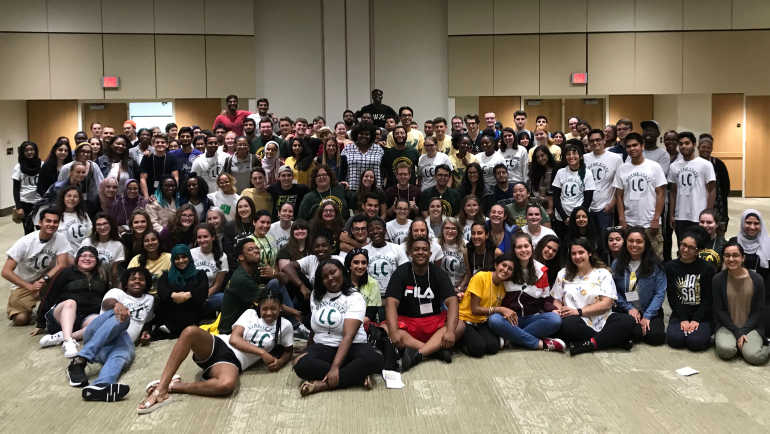
Wayne State’s Learning Communities (LC) provide students with the advantages of a small-college learning experience and the resources of a major research university. The program, introduced in 2006, has grown to include approximately 40 unique Learning Communities serving 9,000 undergraduate students. With the help of an innovative assessment approach, WSU’s Learning Communities will continue to expand and improve.
“The culture around assessment on campus is changing, and people can see the value of a consistent assessment process. We’re fortunate to have support from WSU’s administration and the ability to collaborate with a great team of people,” said Stefanie Baier, a post-doctoral researcher focused on student success at WSU. “Ultimately, we’re all working to help students succeed, and assessment helps us with that mission.”
Baier has led the development and implementation of an updated LC assessment process, which was launched in 2014. Her work was recognized at the Indiana University-Purdue University Assessment Institute’s annual conference in October 2018 and has since been published in the National Institute of Learning Outcomes Assessment newsletter.
As part of a new process, all LCs incorporate at least three of the eight key elements of high-impact practices, which include:
- Performance expectations are set at appropriately high levels
- Significant investment of time and effort by students over an extended period of time
- Interactions with faculty and peers about substantive matters
- Experiences with diversity, wherein students are exposed to and must contend with unfamiliar people and circumstances
- Frequent, timely and constructive feedback
- Periodic, structured opportunities to reflect and integrate learning
- Opportunities to discover relevance of learning through real-world applications
- Public demonstrations of competence
“The application of these eight key characteristics is related to instructional settings, but they can easily be applied in Learning Communities,” said Baier. “We found that many of our LCs were already incorporating some of these characteristics into their work, but their implementation process needed to be more intentional.”
The updated assessment process also includes self-assessment and surveys sent to all stakeholders within a LC, including the individual coordinators, peer mentors and students participants.
“Our Learning Community assessment has evolved over the years, and we’re working to make the process even more consistent, intentional and transparent,” said Amy Cooper, program coordinator for Learning Communities. “We’re finding that increased communication and collaboration around the assessment process has helped us better serve our students. When the students can see themselves as part of the larger end goal — right from the very start of their involvement in a LC — they feel more engaged.”
Baier and Cooper say they have noted an increase in constructive conversations and an increase in collaboration.
“We’re gaining more feedback with every data set, which has led to reflection and ongoing discussions,” said Baier. “Gathering all of this information helps us see how far we’ve come and where we can grow. It also helps us imagine what impact is possible within the LC program.”
To learn more about Learning Communities at Wayne State, visit wayne.edu/learning-communities.
To learn more about Assessment at Wayne State, visit wayne.edu/assessment.
